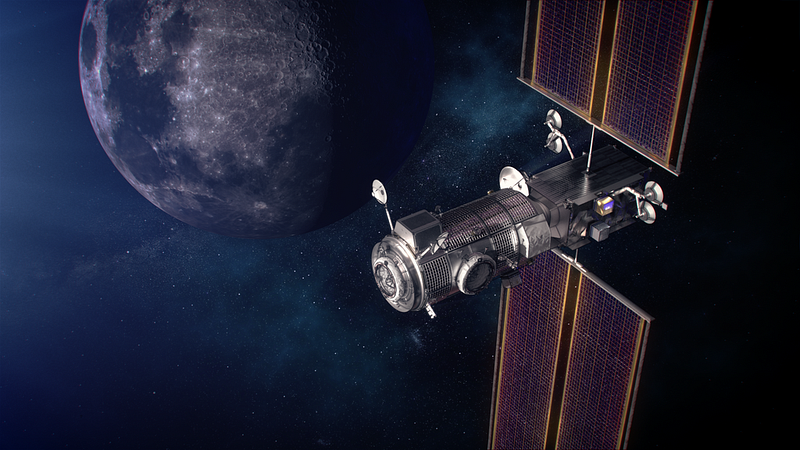Navigating the Challenges of the Future Lunar Gateway Station
Written on
Chapter 1: The Reality of Space Travel
The narratives of space tourists fortunate enough to experience life aboard the International Space Station (ISS) are diverse, yet a common theme emerges: long-term stays come with significant trade-offs. One cannot simply step outside for fresh air, nor is there ample room to move about comfortably.

[Photo: National Aeronautics and Space Administration (NASA), Public domain, via Wikimedia Commons]
The upcoming Lunar Gateway is envisioned as a crucial transit hub for astronauts traveling from Earth to the Moon aboard the Orion spacecraft. Upon docking at the Gateway, astronauts will transfer from Orion to the Gateway station, subsequently moving on to the Starship lunar lander. Originally, the Gateway was also intended to support longer missions that might simulate flights to Mars.
However, it appears that the Gateway may present substantial challenges for astronauts. Positioned at a distance of 360,000 kilometers from Earth—compared to the ISS's mere 400 kilometers—the Gateway will also be modestly sized.
Construction of the Gateway is set to commence in the coming years, with completion expected by the end of this decade. Its volume is projected to be only one-sixth that of the ISS. While this may not sound alarming at first glance, the reality is quite different.
The Gateway is anticipated to feature two modules, each with a volume of just 8 cubic meters (2 x 2 x 2 meters). This limited space will need to accommodate four astronauts at a time, as one of the modules will be dedicated to work-related tasks.
When it comes to the interior of the Gateway, scientists concede that standing upright will be nearly impossible unless an astronaut aligns their body along the narrow corridor.
Why is the Gateway so compact? The answer is straightforward: current technology does not allow for the launch of larger modules into lunar orbit. Originally, plans called for modules similar in size to those in Earth’s orbit, with an outer diameter of 4.5 meters and a length of 6 meters. However, payload limitations necessitated a reduction to a diameter of just 3 meters. These dimensions do not account for the internal systems, which means that astronauts will find themselves navigating a cramped 120 × 120 cm tunnel.
In comparison, the ISS—boasting interior dimensions of 220 × 220 cm—now seems luxurious.
Consequently, while astronauts can reach the circumlunar station, they will mostly find themselves sitting due to the lack of space for standing. Navigating the narrow corridor will also prove challenging, especially when multiple astronauts are present.
To add to the discomfort, the Gateway station will not feature any windows, leaving little to admire beyond its confined walls.
Chapter 2: Safety Concerns and Future Implications
As concerns about the safety and functionality of the Gateway grow, questions arise regarding the feasibility of prolonged stays in such cramped conditions. Astronauts may face unprecedented challenges as they adapt to life in this new environment.
In conclusion, while the aspirations for lunar exploration are grand, the practicalities of living and working aboard the Gateway present a daunting reality that must be addressed before embarking on these ambitious missions.
Thank you for reaching the end of this article! If you found it insightful, I would appreciate your feedback and support. Consider leaving a clap or following me for more content. Thank you!